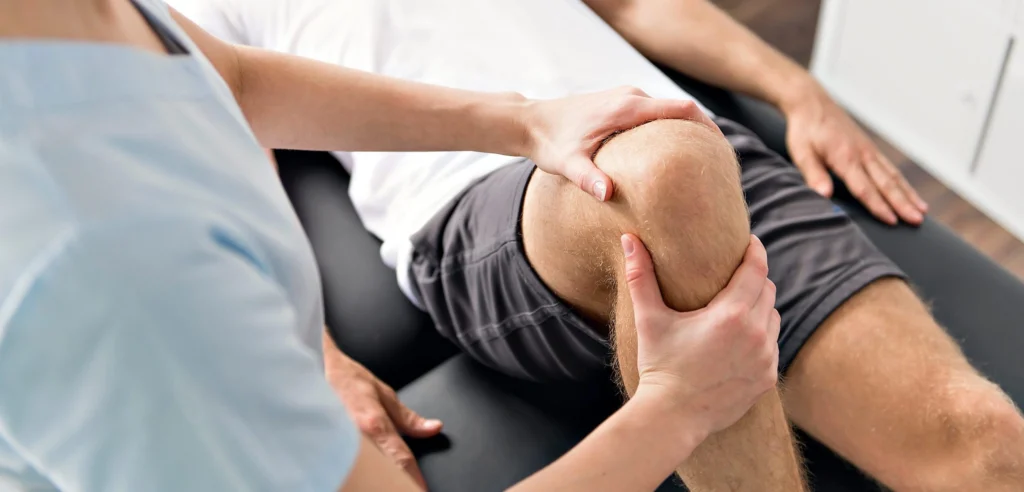Taking care of our body comes in all sorts of different ways. Many of them are not something we think about during an average day but the truth is that they all come together when our health is concerned. If some area is lacking, there is usually a side effect that is reflected in pain or discomfort. Often times it is nothing serious, but sometimes we require a great deal of help. One of the biggest and most common modern problems of working adults and students is the large amount of sitting during a regular workday.
Contemporary way of life implies using computers for practically anything, while studying, eating, and driving all imply hours of sitting during the day. Entertainment is largely the same. If people do not counter this directly with enough exercise and staying active, the result is usually chronic back pain that makes even the most mundane and common daily tasks harder. Physiotherapy then becomes the only thing that can help but it is not that easy. Even physiotherapy needs to be done the right way if it is to help with back pain.
In this article we talk about managing all the pain and discomfort your back may be exposed to with the right kind of therapy. Lower back pain is a modern problem and it requires modern solutions. Read on to learn what they are and how you can finally get rid of the discomfort. To find out more info about this, make sure to also check out fisiokit.com.
What It Is

Physiotherapy implies doing physical exercises and stretching in order to therapeutically get rid of some kind of pain or discomfort. It is the most widely used forms of treatment for any sort of relief especially when it comes to back pain. It can be done in isolation to target specific areas, like lower back, or in combination with other treatments including heat and cold, massages, ultrasound, and activities like swimming. Every patient is different so the approach has to be unique.
To make things even more difficult, human back is a very complex system made up from different, interlocking elements. It can be the joins, the ligaments, the muscles, or the bones that are to blame for the pain. It may even be the nerves that are not even in the back that cause the pain. Due to such complexity, physiotherapy is a careful approach and numerous rehabilitation programs exist.
Key Elements of Back Pain Physiotherapy

Different aspects make up the whole rehabilitation program, and this is where you can learn about the most important tips for managing your entire experience. First of all, it is important to get going early and to start treatment soon after you realize that the pain is not going away. Evidence from research suggests that encouraging early movement is among the most significant aspects of treatment.
Once you realize that you need physiotherapy, there needs to be an increased amount of correct movement in your life. Promoting mobilization of specific areas affected by the pain helps to promote relief and the results will be evident sooner. Manipulative physiotherapy targets the points of pain and further improves the overall therapy efforts.
Among the most often causes of back pain is the lack of core strength and proper stability. Paired with improper posture and too much sitting, the back suffers during the weakest of physical tasks like walking or simply sitting up straight. This is where specific stabilization exercises come in where the right amount and type of stress is put towards improving the strength and stability of muscles around the painful area. Such pain is the most common in the lower back when it becomes weak so making sure you strengthen it with workouts is prevalent for a speedy recovery.
Another good tip and something generally overlooked are ergonomic tools and devices you can use. People forget that the human back has a specific shape and that we need to follow the natural curves of our body if we want to prevent pain. Using the right kind of chairs and footwear can help greatly here. Vests that keep the back straight and promote good posture are also a good thing to try if you cannot keep your back up straight for long.
Different Types of Physiotherapy

As we mentioned already, every patient is different and back problems come in numerous different shapes. This is why there are different physiotherapies and approaches as well. There are mainly two distinct ones, active and passive physical therapies.
Active physical therapy involves stretching of the back, legs, and arms, followed by strengthening, lumbar stabilization and exercises. Low impact aerobic conditioning is also a part of active physical therapy programs.
On the other hand, passive therapy is there for patients whose conditions are too painful even for the lightest pf physical therapy exercises. In these scenarios, heat and ice packs are used in combination with TENS units, lonophoresis, and ultrasound.
Exercises to Do
If you want to maximize the effect of your physiotherapy, there is something you can do as well. In case you want to know what you can do on your own to strengthen your back without or before visiting an expert, there are exercises you can do in your own time. Ankle pumps, heel slides, wall squats, leg raises, knee to chest stretches, hip flexor stretches, and lumbar stabilization exercises are all simple and light enough for you to do at home, every day.
Once you start physiotherapy you will already have a good basis to go off of. You may not even need physiotherapy other than these exercises, but this can only happen if you stay true to your word and if you truly decide to get better. Remember that back pain is a modern issue that plagues millions of people, but also one that can be easily treated with a little bit of dedication and common sense. Sit less, be active more, eat healthy, and stretch and exercise daily. The back pain will probably ease off or completely go away once you change your life a bit.

